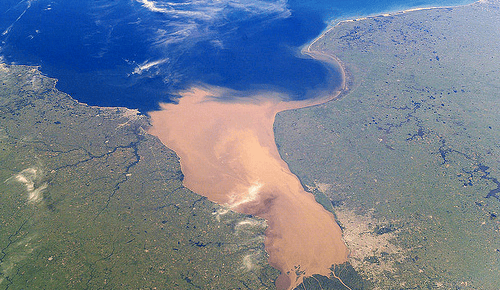A study recently published on Climate Dynamics (among the others, CMCC researcher A. Cherchi and A. Carril) investigates the role of tropical oceans in modulating precipitation variability in the region of La Plata Basin. An ensemble of nine experiments with the same interannually varying sea surface temperature (SST), as boundary forcing, and different initial conditions were used and results from the ensemble were compared with a twentieth-century experiment performed with a coupled ocean-atmosphere model, sharing the same atmospheric component.
The publication is one of the outputs of the CLARIS – LPB project
The abstract of the paper:
An ensemble of nine experiments with the same interannually varying sea surface temperature (SST), as boundary forcing, and different initial conditions is used to investigate the role of tropical oceans in modulating precipitation variability in the region of La Plata Basin (LPB). The results from the ensemble are compared with a twentieth-century experiment performed with a coupled ocean-atmosphere model, sharing the same atmospheric component. A rotated empirical orthogonal functions analysis of South America precipitation shows that the dominant mode of variability in spring is realistically captured in both experiments. Its principal component (RPC1) correlated with global SST and atmospheric fields identifies the pattern related to El Niño Southern Oscillation and its large-scale teleconnections. Overall the pattern is well simulated in the tropical southern Pacific Ocean, mainly in the ensemble, but it is absent or too weak in other oceanic areas. The coupled model experiment shows a more realistic correlation in the subtropical South Atlantic where air-sea interactions contribute to the relationship between LPB precipitation and SST. The correspondence between model and data is much improved when the composite analysis of SST and atmospheric fields is done over the ensemble members having an RPC1 in agreement with the observations: the improvement relies on avoiding climate noise by averaging only over members that are statistically similar. Furthermore, the result suggests the presence of a high level of uncertainty due to internal atmospheric variability. The analysis of some individual years selected from the model and data RPC1 comparison reveals interesting differences among rainy springs in LPB. For example, 1982, which corresponds to a strong El Niño year, represents a clean case with a distinct wave train propagating from the central Pacific and merging with another one from the eastern tropical south Indian Ocean. The year 2003 is an example of a rainy spring in LPB not directly driven by remote SST forcing. In this case the internal variability has a dominant role, as the model is not able to reproduce the correct local precipitation pattern.
Read the integral version of the paper:
Cherchi A., Carril A., Menendez C., Zamboni L.
La Plata Basin precipitation variability in spring: Role of remote SST forcing as simulated by GCM experiments
2014, Climate Dynamics, 42, 219-236 DOI: 10.1007/s00382-013-1768-y




